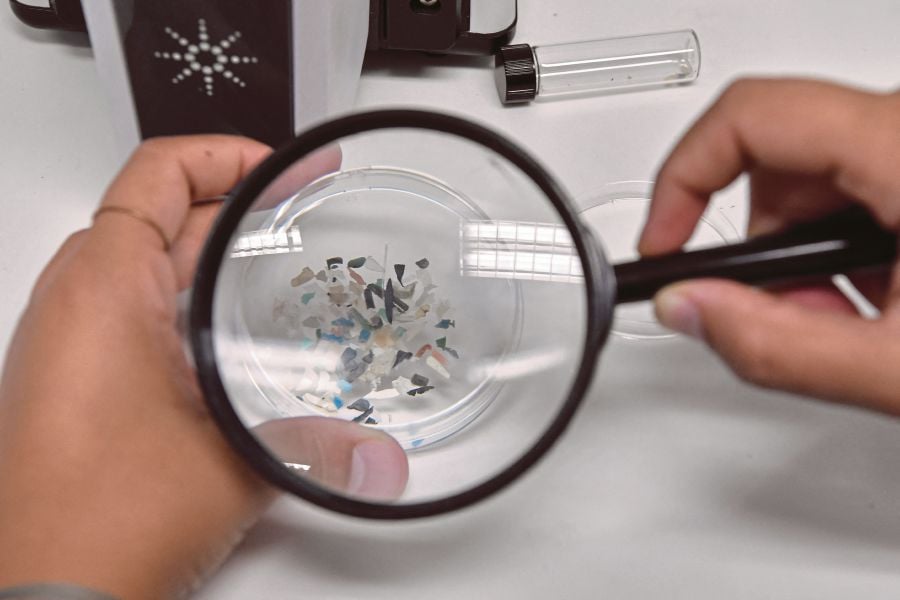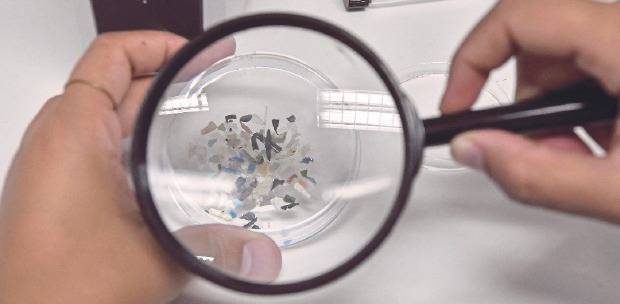KUALA LUMPUR: Human testicles have up to three times the amount of microplastics and nanoplastics than animal testes and human placentas, a study found.
A study published in the journal 'Toxilogocial Sciences' found that these plastics are often nano-scale, typically less than half a micron in length around 20 to 200 nanometers in width, CNN reported.
"They look like little shards, tiny broken bits from very, very old plastics," said toxicologist Matthew Campen, the co-author of the study that was published on May 15.
Campen, a regents' professor of pharmaceutical sciences at the University of New Mexico in Albuquerque, and other experts say that such minuscule particles can invade individual cells and tissues in major organs.
This can interrupt cellular processes and potentially deposit endocrine-disrupting chemicals such as bisphenols, phthalates, flame retardants, per- and polyfluoroalkyl substances, or PFAS, and heavy metals.
Endocrine disruptors interfere with the human reproductive system, leading to genital and reproductive malformations as well as female infertility and a decline in sperm count, according to the Endocrine Society.
In fact, sperm counts in parts of the world, including the United States, have declined by at least 5 per cent over the past 50 years, the society stated on its website.
"This is an eyes wide open situation right now," Campen said.
"We're just now realising how much plastic is in our bodies. We need a surge of research around this topic to confirm or deny a role for microplastics in driving infertility, testicular cancer and other cancers."
The new study tested 23 preserved testes from cadavers aged 16 to 88 at the time of their death. It then compared the levels of 12 different types of plastics in those testicles with plastics found in 47 dog testes.
"The levels of microplastic shards and types of plastics in human testes were three times greater than those found in dogs, and the dogs are eating off the floor," Campen said.
"So it really puts in perspective of what we're putting in our own bodies."
Polyethylene, one of the most widely used plastics in the world, was the predominant type of polymer in both species, followed by PVC, or polyvinyl chloride, another commonly used chemical that can contain chemical additives and heavy metals including phthalates, cadmium and lead. Phthalates, called "everywhere chemicals" because they are so common, are added to consumer products to make the plastic more flexible and harder to break.
Researchers expected to find more plastic shards in the testicles of older men in the study, but that wasn't the case, Campen said.
"It seems that in peak reproductive years for men, which is from 20 to 45, there are higher levels of plastics, which then begin to decline after the age of 55," he said.
"This suggests the human body can eliminate these plastics."
But there is a downside.
Campen added that the finding also suggests the increased energy needs of a younger testicle may "also pull more plastic into that organ."
"Add to that, the fact that the number of plastics we're exposed to is doubling at a rate of every 10 to 15 years," he said.
"So what's going to happen in 15 years when we are exposed to twice the amount or 30 years when we are exposed to four times the amount? That is why action is desperately needed now."
Researchers also compared the testes results with microplastic levels found in an earlier study on 62 human placentas, the organ that provides oxygen and nutrients to a developing fetus in the womb.
In that February study, led by Campen, researchers found microplastics at levels of 6.5 to 790 micrograms per gram of tissue in all the placenta samples studied.
"In testes, the levels of plastic was three times as much as we saw in placentas," Campen said.
"But you have to consider that the placenta only has a life of about eight months."
Campen's study isn't the first report to find plastics in reproductive tissue. A team of Beijing-based researchers found microplastics in six human testes and 30 semen samples in a June 2023 study, while animal studies have shown tiny plastics can impact sperm count and contribute to hormone and other disruptions in male sexual organs.
In studies of pregnant mice, researchers have found plastic chemicals in the brain, heart, liver, kidney and lungs of the developing fetus 24 hours after the pregnant mother ingested or breathed in plastic particles. Other research has shown that micro- and nanoplastics may cause oxidative stress, tissue damage and inflammation in cells, while animal studies have shown such particles may alter heart rate and impede cardiac function.





